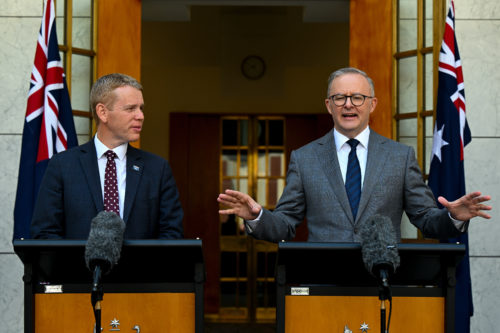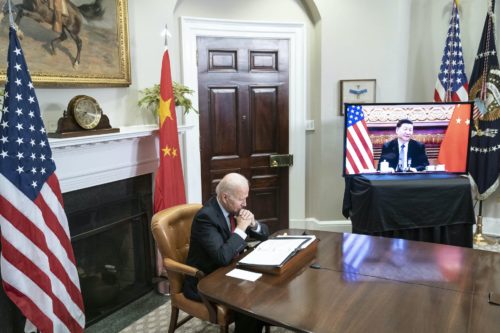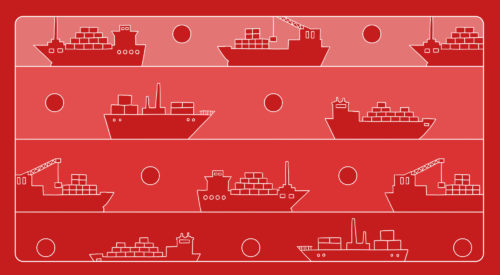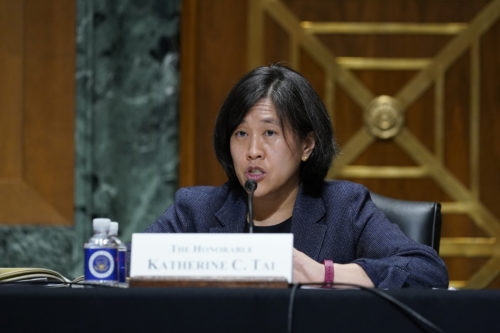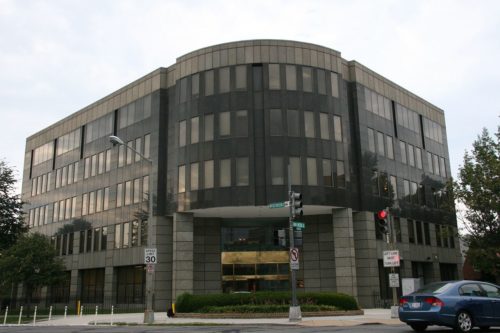Trump targets another $200 billion — trade war update, day six

The U.S.-China trade war is getting ugly, fast.
Before day five of the confrontation even came to the end, Bloomberg broke the news (paywall) that American officials were drawing up lists of additional Chinese products totaling $200 billion to tax at a 10 percent rate, to be published “likely this week.”
NEW U.S. DEMANDS
That list was released only hours later by the U.S. Trade Representative — see the full 205-page PDF of it here — along with a firm statement by the office’s head, Robert Lighthizer, who promised more escalation until the U.S. could achieve “the elimination of China’s harmful industrial policies” and see “China opening its market to U.S. goods and services.”
- “The new tariffs won’t take effect for at least two months,” and “hearings on the products are scheduled for Aug. 20-23,” the Wall Street Journal reports (paywall).
- “Chinese fish, petroleum, chemicals, handbags, textiles” are among the products to be taxed if this second large round of much broader tariffs is implemented, the New York Times notes (paywall).
- “Tonight’s announcement appears reckless and is not a targeted approach,” Orrin Hatch, the Republican senator from Utah, said in a statement cited by the Journal and the Times, highlighting the increased controversy that the new tariffs could bring.
- Not on the schedule, at least for now, are any negotiations to de-escalate the conflict, according to “officials in both nations,” the Journal says.
- China is highly unlikely to back down on its industrial policies, by which Lighthizer means the Made in China 2025 initiative.
- The U.S. wants unilateral market opening, rather than a negotiated settlement on trade in goods through, say, the World Trade Organization. Dennis Shea, the U.S. ambassador to the WTO, told that body that “the WTO currently does not offer all of the tools necessary to remedy this situation,” and urged, “The best solution is for China finally to take the initiative to fully and effectively embrace open, market-oriented policies,” according to Reuters.
CHINESE GOVERNMENT REACTIONS
Officials are branding China as a protector of free trade in the conflict:
- “This is a fight between unilateralism and multilateralism, protectionism and free trade, and between hegemony and rules,” Ministry of Finance spokeswoman Hua Chunying said, the Washington Post reports.
- “They go low, we go high,” Li Chenggang, an assistant minister at China’s Ministry of Commerce, said at a forum in Beijing with the City of Chicago, employing a Democratic Party slogan popularized by former first lady Michelle Obama in 2016, according to Bloomberg (porous paywall).
- Beijing sees this as an “economic cold war,” a “source close to decision makers in Beijing” told the South China Morning Post, and is “trying to convince governments, organizations and companies — including U.S. firms — that it is a champion of free trade, and send a message that, in contrast to Trump’s ‘America first’ policy, China is ‘still open for business’ and wants to keep globalization on track.”
- “To defend the core interests of the nation and the fundamental interests of the people, the Chinese government will, as always, be forced to take necessary countermeasures,” a spokesperson for China’s Ministry of Commerce said, according to Xinhua.
MARKET REACTIONS
Chinese domestic financial markets are nervous:
- “On Wednesday, China’s stocks fell, with the benchmark Shanghai Composite Index losing 1.8 percent and the Hang Seng Index in Hong Kong down 1.3 percent. The offshore yuan weakened to test 6.7 against the U.S. dollar — a level that Beijing defended only a week ago,” the SCMP notes.
- To prevent Chinese markets from further tumbling, or from a boycott against U.S. goods from taking off and escalating the conflict further, government officials have instructed state media to downplay the conflict and “be careful not to link [criticism] to Trump and instead to aim it at the U.S. government,” Reuters reports.
- “The Dow Jones Industrial Average fell 219 points, or 0.88%, to 24,700, the S&P 500 slid 0.71 percent and the Nasdaq was down 0.55 percent,” reports TheStreet.com, while the Financial Times said (paywall), “U.S. futures slid” and “industrial stocks were back under fire again” after the new tariff announcements: “Boeing is down 1.2 percent, Caterpillar dropped 1.5 percent and Deere shed 2 percent.” CNBC reports that “Nvidia, Advanced Micro Devices and Broadcom were among those falling more than 1 percent in trading… on fears about the escalating trade war.”
OTHER TRADE WAR NOTES
- Industrial espionage
Chinese firm denies involvement in alleged theft of Apple self-driving car tech by its new employee / SCMP - Effect on China-Germany relations
U.S.-China trade row helped BASF land $10 billion Guangdong chemical coup: Sources / Reuters - Foreign ownership of auto plants
After Tesla deal, Shanghai to speed up cancellation of foreign ownership limits / Reuters - ZTE
ZTE executives meet with U.S. Commerce Department officials to work out final details of compliance deal / SCMP
Previously in The China Project’s trade war coverage:


